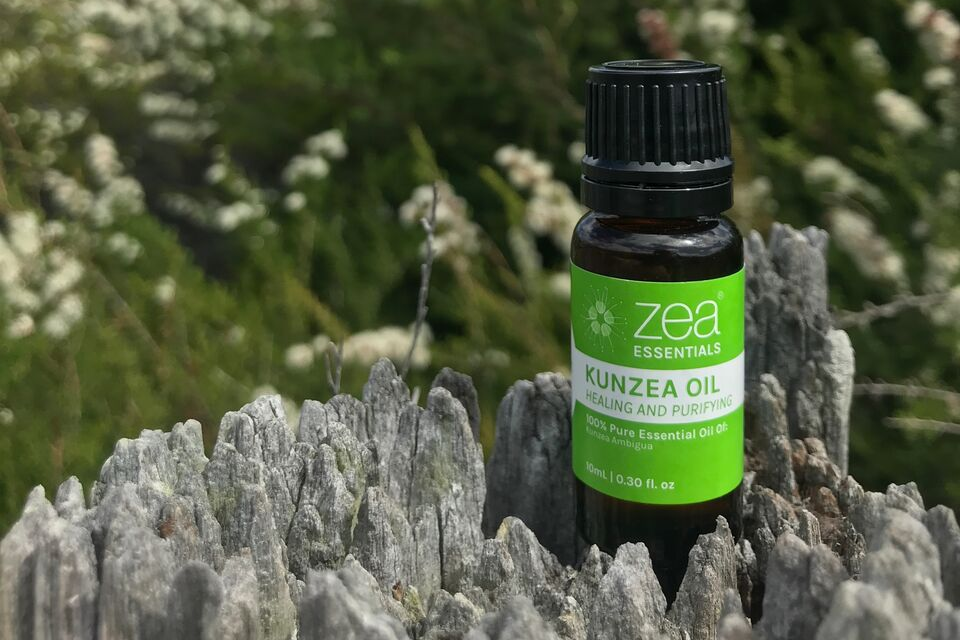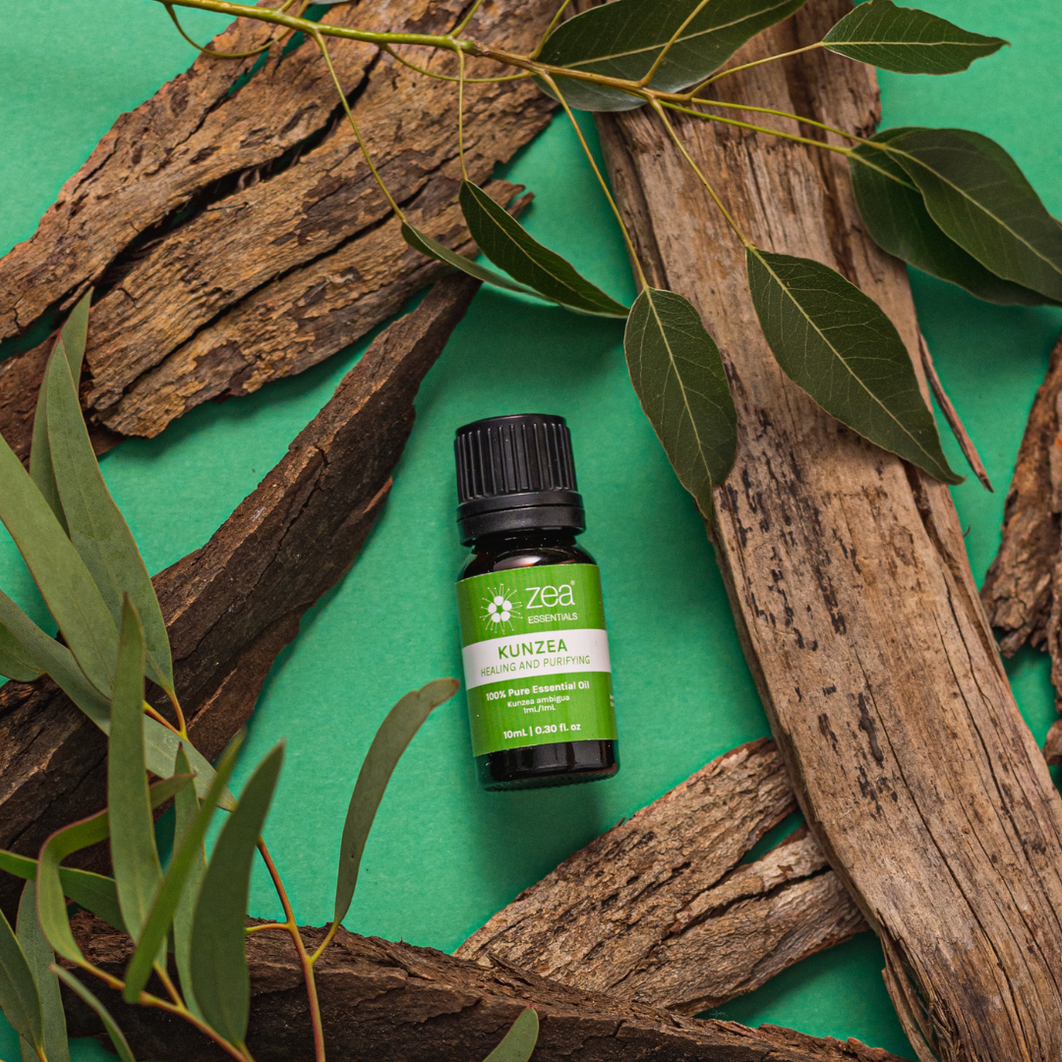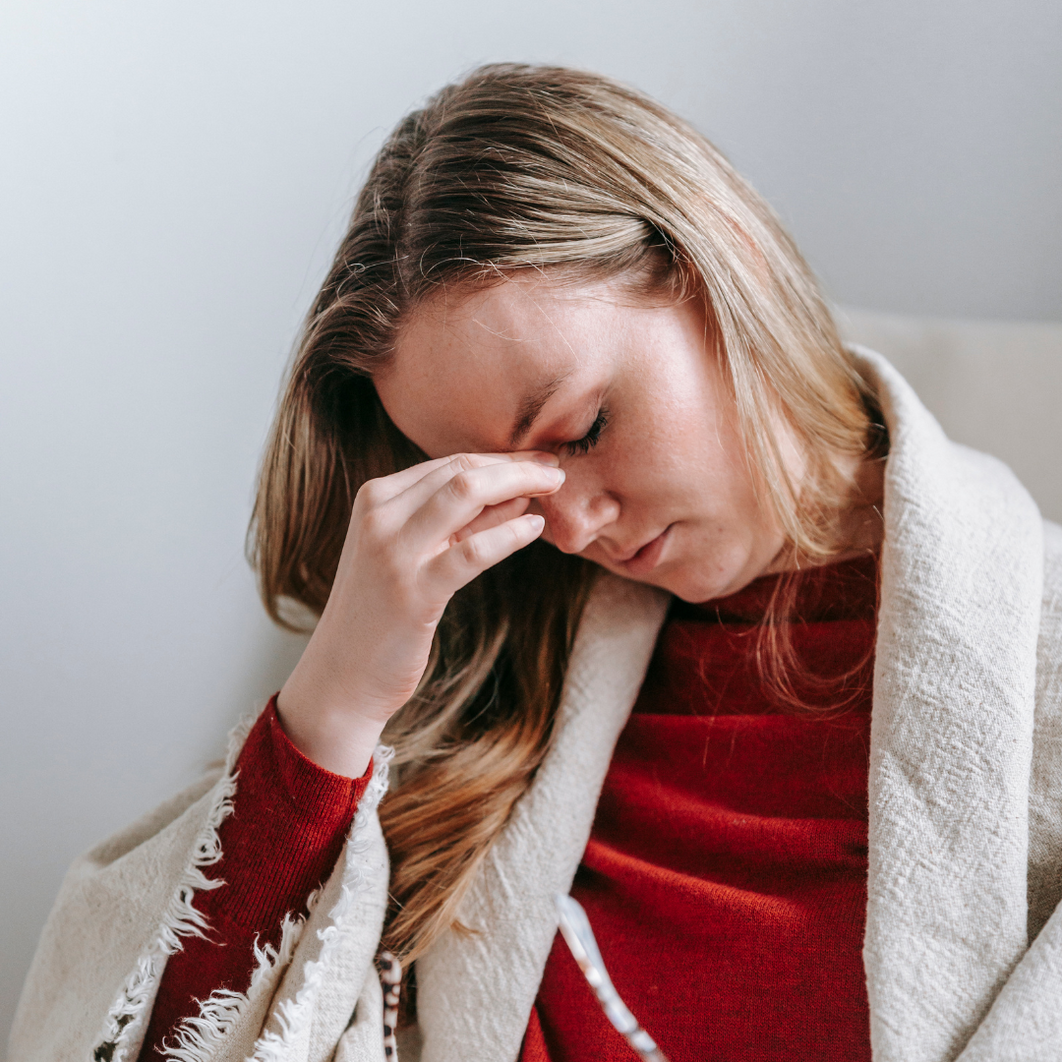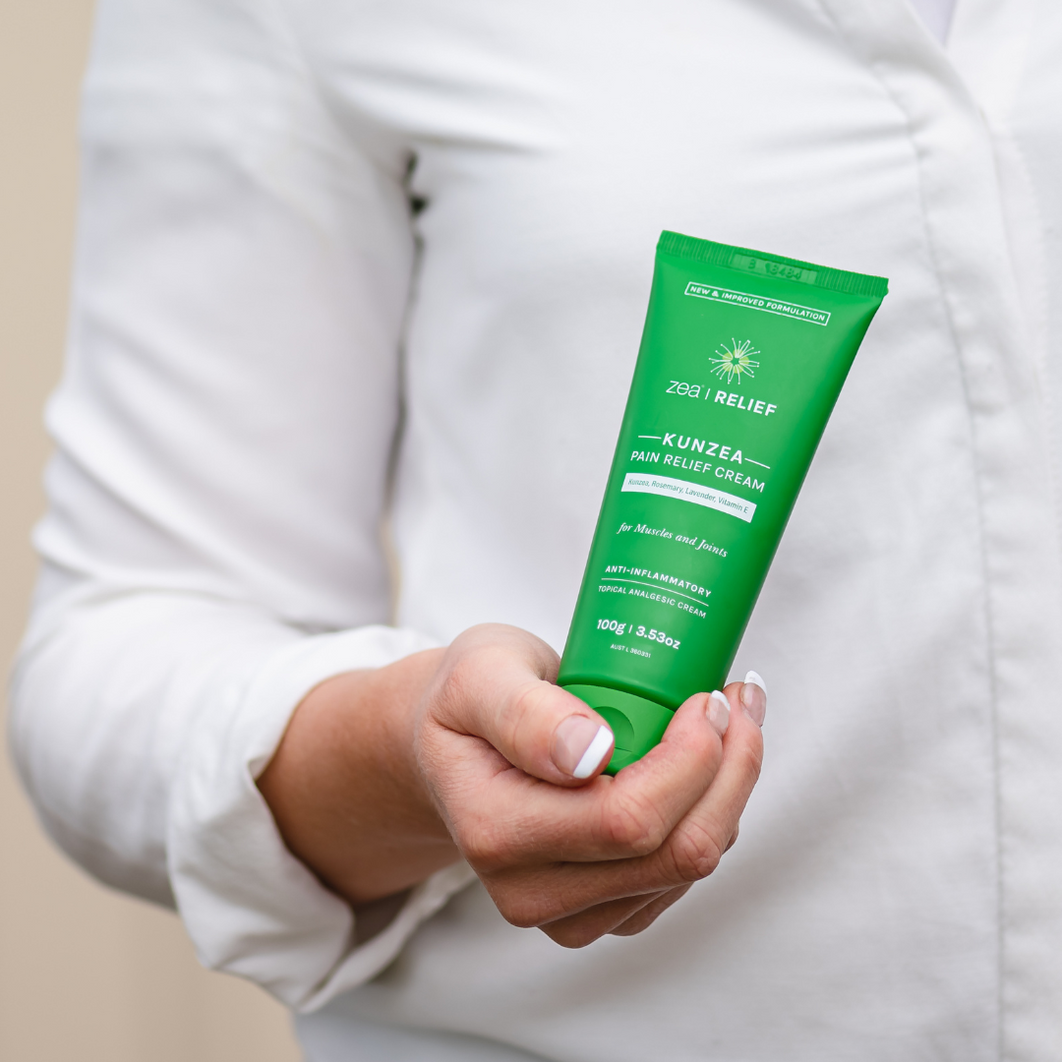By Dr Brent Wells (Guest Post)
So you’ve tried every headache treatment out there - drinking more water, cold compression, ginger tea, regular yoga, meditation…the list goes on and on. These natural treatments are all often very important and useful, but have you tried essential oils? It may seem like a daring option, but in reality, science now backs up the health benefits of using essential oils for headaches and migraines.
Essential oils are a natural, scientifically-based choice that could relieve your next headache or migraine. Once you know the benefits of different oils, how to use them and other important safety information, you’ll be well on your way to a headache-free day!
What are essential oils?
Essential oils are the pure liquid extracts that are distilled from organic plant matter. Each essential oil has a unique scent and therapeutic uses.
You may be thinking of perfumes or flavouring, but essential oils go beyond these common uses. Essential oils can interact with various areas of your body and may help to reduce pain, stress, anxiety, etc.
You can learn more about the basics by reading the Zea blog post, Essential Oils 101.
How do I use essential oils?
After learning the basics, essential oils are easy-to-use and can be a lot of fun for everyone at home. However, it is important to remember that they are still considered a form of medicine and should be treated accordingly.
The two most common ways of using essential oils are inhalation and topical application. If applying to the skin, they should always be diluted in a base oil first.
We do not recommend that essential oils are ingested or taken orally, unless it is with the guidance of qualified health professional (see more on this topic here).
If you’re not sure whether to inhale essential oils or apply them topically to the skin, keep in mind that both methods will give you the main benefits of the oil.
In general, inhalation will absorb the oil into the body’s bloodstream faster than being applied topically. On the other hand, when the oil is applied to the skin, it takes longer to enter the bloodstream, but will better serve the area applied.
Common mistakes when using essential oils
Essential oils should be used responsibly. Make sure to consider your medical conditions before using them. If you’re pregnant, have asthma or allergies, or other medical conditions, we recommend checking with a doctor before trying essential oils.
In addition, we can’t stress this enough - always dilute essential oils before applying them topically. Especially when you’re first trying an essential oil, it’s important to have a high dilution ratio to avoid any effects or reactions. You can dilute essential oils with carrier oils such as fractionated coconut oil, almond oil and avocado oil. We recommend a ratio of about 4-10% for an adult applying it to the body (not the face).
Top five essential oils for headaches
There are a myriad of different essential oils that you can use to relieve a headache or migraine¹. Every oil has different properties and can be used effectively depending on the type of headache or migraine you’re experiencing. Below, we’ll give an overview of the top essential oils and their ideal application.
1) Peppermint
Peppermint essential oil has been heavily studied as having a relieving effect on headaches. One study has linked its “cooling” property to increased blood flow and muscle relaxation². Because of the link to muscle relief, it’s especially useful for a tension headache.
Example application: Try diluting it and applying it topically to your temples and forehead.
2) Eucalyptus
Eucalyptus is another great choice for headaches. It has anti-inflammatory and autoimmune-boosting properties³, which makes it ideal for sinus headaches or those originating from bacterial infections⁴.
Example application: A good way to benefit from eucalyptus is through steam inhalation. Add 3-4 drops to a bowl of boiling water, close your eyes and cover your head with a towel. The combination of the eucalyptus and the steam will have a maximum effect on your sinuses.
3) Lavender
Lavender is an excellent “catch-all” essential oil that is best known for relaxation and stress relief⁵. Not only is it a good antibacterial, but it’s also an immune-booster. Because it has a sedative effect, Lavender is also commonly used to help you get to sleep⁶. This essential oil is good for any headache, or to use after a stressful day at work.
Example application: After work or at night, try making a compress for your forehead with water and a few drops of lavender.
4) Rosemary
Rosemary is a great option to improve circulation and is shown to be good for relieving fatigue and killing pain⁷. It may also have a positive effect on memory. It’s great for any migraine or cluster headache, or any headache that involves moderate to intense pain⁸.
Example application: Try adding 2-4 drops of rosemary to an aromatherapy diffuser at home.
5) Kunzea
This unique Australian essential native is one of the most powerful and effective for fighting headaches and migraines. Kunzea is known to reduce pain and inflammation, which is essential in helping to relieve pain associated with bad headaches and migraines.
Example application: Add to a carrier oil and gently rub into the temples, forehead, and neck area.

How else can I use essential oils?
You can enjoy essential oils in several different forms, as mentioned above.
- Aromatherapy Diffuser - This is one of the most popular ways to inhale essential oils. You can purchase a diffuser for your home or car, which will release the aromatic and therapeutic benefits of essential oil over several hours. Or, if you prefer you can apply a few drops to a cotton ball and breathe in the essential oil that way.
- Topical Application - Remember that when applying essential oils to the skin, you must dilute them first in a carrier oil (such as coconut, almond and vegetable oils). After this is done, press the oil against your temples or forehead for best results.
- Massage - Another form of topical application is massage and reflexology. Once diluted in a base oil, you can have essential oils rubbed into your skin during a massage treatment. This will help in both relaxing and relieving your muscles. Essential oils can be incorporated into massage therapy treatment for maximum results⁹.
- Bath - Taking a bath with about 6-8 drops of essential oils can be a relaxing way to receive the properties of the essential oil. If taking a bath, be sure to use a suitable emulsifier to ensure the oil disperses throughout the bathwater.
Side effects and other must-knows
Remember that, while it is rare, you may experience side effects when using essential oils - and some are more likely to cause irritations than others. They are medicine and should be treated accordingly.
Be sure to use smaller amounts at first to see whether you have any adverse reactions and use cautiously at all times, particularly around young children.
If you experience any side effects, such as rashes and/or allergic reactions, stop using it and consult your doctor. If used topically, the oils should always be diluted. If diffused, they should not be inhaled for longer than an hour.
Essential oils can be beneficial for relieving your next headache or migraine, but should always be used in moderation and with correct safety measures in place.
Have fun with essential oils
Essential oils are an enjoyable and scientifically-based option for alleviating headaches and migraines. Make sure you test different oils to see which scents you prefer and which ones work best for you. Use a trial-and-error approach for the different methods - starting at lower ratios first - and make the most of the various essential oil properties and stay headache-free.

About the Author - Dr Brent Wells
Dr. Brent Wells, D.C. is the founder of Better Health Chiropractic & Physical Rehab and has been a chiropractor for over 20 years. His practice has treated thousands of patients from different health problems using various services designed to help give you long-lasting relief.
References
- “11 Secrets for Getting Rid of Headaches”. https://betterhealthalaska.com/chiropractor-resources/11-secrets-getting-rid-headaches/
- H.Göbela, G. Schmidt, M. Dworschak, H. Stolze, D. Heuss. Phytomedicine Volume 2 “Essential plant oils and headache mechanisms”. https://doi.org/10.1016/S0944-7113(11)80053-X. Available online 1 November 2011.
- BabarAli1, Naser AliAl-Wabel1, SaibaShams2, AftabAhamad3, Shah AlamKhan4, FirozAnwar5.
- Asian Pacific Journal of Tropical Biomedicine Volume 5. “Essential oils used in aromatherapy: A systemic review”. https://doi.org/10.1016/j.apjtb.2015.05.007. Available online 10 July 2015.
- Sri Mulyaningsih, Frank Sporer, Jürgen Reichling, & Michael Wink. “Antibacterial activity of essential oils from Eucalyptus and of selected components against multidrug-resistant bacterial pathogens”. https://doi.org/10.3109/13880209.2011.553625. Published online: 19 May 2011.
- Yumi Shiinaa, Nobusada Funabashia, Kwangho Leea, Tomohiko Toyodaa, Tai Sekinea, Sachiko Honjoa, Rei Hasegawaa, Takayuki Kawataa, Yu Wakatsukia, Shinichiro Hayashib, Shio Murakamib, Kazuo Koikec, Masao Daimona, Issei Komuroa. International Journal of Cardiology Volume 129. “Relaxation effects of lavender aromatherapy improve coronary flow velocity reserve in healthy men evaluated by transthoracic Doppler echocardiography”. https://doi.org/10.1016/j.ijcard.2007.06.064. Available online 8 August 2007.
- Babar Ali1, Naser AliAl-Wabel1, Saiba Shams2, Aftab Ahamad3, Shah AlamKhan4, Firoz Anwar5. Asian Pacific Journal of Tropical Biomedicine Volume 5. “Essential oils used in aromatherapy: A systemic review”. https://doi.org/10.1016/j.apjtb.2015.05.007. Available online 10 July 2015.
- O.V.Filiptsova, L.V.Gazzavi-Rogozina, I.A. Timoshyna, O.I. Naboka, Ye.V. Dyomina, A.V. Ochkur. Egyptian Journal of Basic and Applied Sciences Volume 4. “The essential oil of rosemary and its effect on the human image and numerical short-term memory”. https://doi.org/10.1016/j.ejbas.2017.04.002. Available online 8 May 2017.
- “Massage Therapy in Anchorage and Juneau”. https://betterhealthalaska.com/services/massage-therapy/




